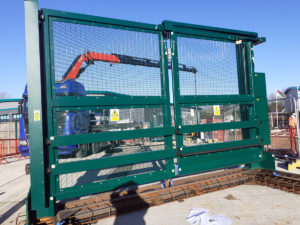
Threats of domestic and international terrorism and actual acts of terrorism have been a constant danger in the UK. The Joint Terrorism Analysis Centre and the Security Service (MI5) grade the National Threat Level at five levels (low, moderate, substantial, severe, and critical). Currently, in the UK this level is deemed to be ‘severe’, which means that according to their understanding, an attack is highly likely.
While members of the public are at risk as much as organisations (as shown by the 7/7 London Bombing attacks for instance) businesses must be also vigilant in the face of terrorism – particularly those that operate in sensitive fields.
Sensitive operations
Some businesses and organisations by their very nature can become targets for political or religious agendas. This may come in the form of general online sentiment, physical protest, sabotage or even terrorist attacks.
Infrastructure targets
Elsewhere businesses and organisations can fall into the crosshairs of terrorists due to their standing within UK infrastructure. For example, terrorists looking to cause the most harm possible may seek to exploit water or energy plants to cause widespread disruption and harm.
How to prepare
To mitigate the risks of an attack, it is, of course, important to create dialogues with local and national policing groups who can advise on the likelihood of attacks and, where they are able, brief you on threats. However, with the frequency and unpredictability involved, it makes sense for those targets that are of particularly high risk to take pre-emptive measures to adequately protect themselves.
The first step is to undertake a full risk assessment with a specialised provider. An experienced professional should take into account the nature of your operations, the size of your site, and the possible threats and create a list of bespoke recommendations for you to consider.
There are many tools for the job, and their recommendations may come in the form of both specialised and more general advice and equipment solutions.
To guard against the risk of intrusion, sabotage and protest, you might be advised to utilise turnstiles and barriers. These simple but effective tools can provide the first line of defence and afford maximum control over who gets in and out of your property. Bollards are another key way to afford protection and can be either fixed or retractable, allowing additional defence in case of a power outage.
Equally, specialised tools like our bi-folding anti-terrorism gates offer unique properties that are created with neutralising threats in mind. The bi-folding gate is powered by an electric motor with a hydraulic locking pin and features eagle fibre technology and quality bearings and rollers. While the sliding cantilever is the widest gate currently tested at 40mph and 50mph with a 7.5T (N2 and N3) vehicle.
Elsewhere there may opportunities to manage vehicular traffic through crash tested road blockers. These are a commonly used tool for government, financial and private organisations looking to prevent a vehicular terrorist attack which has been a rising occurrence in recent years.
Tough external perimeter security can act as a key deterrent to terrorists seeking to gain entry to a site. However, interior protections should not be overlooked as damage can be caused internally also, whether through physical acts of harm, sabotage or theft. However, pedestrian access can be boxed off through tools such as keypads, biometrics, fobs, and other access control equipment.
It can be difficult to know where to start when it comes to deciding which security strategies are going to be most effective at a site, which is why it is important to begin with a risk assessment. Here at Gateway Automation, we can provide you with a free, no-obligation quotation and feasibility survey to assess your perimeter security requirements. To find out more please contact Gateway Automation on 01522 682255.

Write a Comment